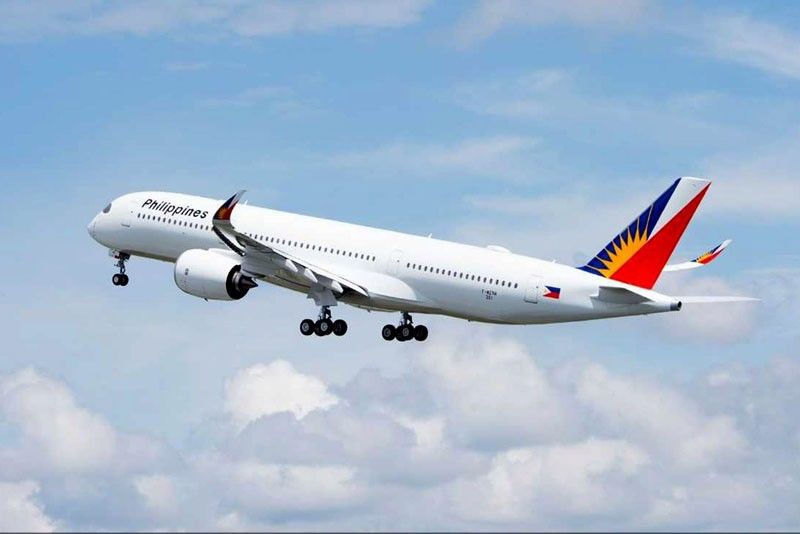PAL spreads new wings

MANILA, Philippines — When one tries to look back into the rich history of Philippine Airlines, one will find a story that makes for a thrilling edge-of-your seat movie with various exciting elements – money, power, success, fraud, corruption and even delusions of grandeur.
And the dates can go as far back as 1935 – long before the second world war, long before today’s most modern airplanes were even born and way, way before the site of one of the finest airports the country ever had became a posh fine dining restaurant.
Life must have been starkly different then and looking at PAL’s place now in the global airline industry – with almost 90 airplanes and more than 60 local and foreign destinations – it’s hard to imagine this four-star carrier started with a single lightweight Beechcraft Model, the 18 NPC-54, as its first airplane.
In 1935, PAL’s predecessor, the Philippine Aerial Taxi Company Inc., otherwise known as PATCO was born but for some unknown reason, it became inactive, paving the way for the birth of PAL on Feb. 26, 1941 with the famous industrialist Andres Soriano Sr., described in some historical accounts as the aide-de-camp of General Douglas McArthur, at the helm.
Soriano, the Spanish-Filipino industrialist, was once described by the New York Times as “one of the most dominant business personalities in the western Pacific area.” To this day, the companies he either established or expanded are still icons in their respective industries. Andres Soriano Corp. and San Miguel are just among these companies.
And then of course, there’s PAL, which successfully gained the franchise of PATCO. The airline’s nationalization was made possible with an investment from the government.
PAL’s very first flight, according to history records, took off on March 15, 1941, when Soriano’s Beech 18, registered NPC-54, flew five passengers from Manila’s Nielson Field to Baguio in northern Luzon.
Things went well for PAL until the war broke out and affected the business. PAL’s pilots were also called to the army.
Miraculously, PAL resumed operations after the war on what is known around the globe as the day of love or on Feb. 14, 1946. The airline had 15 domestic destinations with five units of Douglas DC-3’s.
On July 31 of the same year, Philippine Airlines became the first Asian airline that safely crossed the depths of the Pacific Ocean when a chartered Douglas DC-4 ferried 40 American servicemen to California from the Nielsen Airport in Makati, which is now the site of Blackbird restaurant.
Later on that year, PAL commenced regular flight service between San Francisco and Manila. It would then earn the name, the “country’s premier flag carrier.”
In 1947, PAL commenced flights to Europe after acquiring more Douglas DC-4’s.
Another year on and PAL had already absorbed its other competitors, the Far Eastern Air Transport and Commercial Airlines and other airlines, making it the lone surviving airline of the Philippines.
By this time, PAL’s ownership was split between the government and the Sorianos.
But problems started sprouting for PAL, which a businessman once described as a milking cow by the government, its owners and its executives.
The World Bank had said in 1989 that the airline was holding “millions of dollars of spare parts for aircraft it no longer owns and ground equipment so badly maintained that it has little value except as scrap.”
Strangely at one point, the Far Eastern Economic Review even reported that PAL had a large inventory of 750,000 sanitary napkins.
When the Marcoses rose to power, the Sorianos lost control of the carrier and PAL became the former first lady Imelda Marcos’ luxury playground for her travels around the world.
Stories and urban legends abound of how the former first lady roamed the world in her own PAL DC-8 jet equipped with a built-in shower, gold bathroom fixtures and a grand piano.
At the time, the airline was officially under the control of the Government Service Insurance System, the state pension fund.
When Corazon Aquino became president, she paved the way for the privatization of PAL, which by then had already been marred by stories of fraud, inefficiency and massive corruption by executives.
In 1992, the taipan Lucio Tan, known as El Kapitan in the industry, became PAL’s white knight.
And the rest as they say is history.
But Tan did not have a smooth flight in the early years after acquiring the carrier. He has had to deal with labor strikes, rationalization, piles of debt and the downgrade to Category 2 status by the Federal Aviation Administration,
However, years and years later, the four-star carrier would successfully soar past the turbulence and air pockets. Today, PAL is gliding steadily to its place in the sun.
Indeed, the Filipino-owned airline is flying across clearer skies, allowing millions and millions of Filipinos and people around the world to reach their destinations wherever these may be.
In an interview with The STAR during a recent visit in Toulouse, France to fetch PAL’s newest addition to its fleet, the Airbus A350-900, PAL president and COO Jaime Bautista said the airline is indeed in a better position now, having journeyed from government hands to the private sector and withstanding all the challenges that came its way.
“It’s better now,” he said.
He said that when the company decided to spin off its catering, ground handling and call-center reservation units, it faced a lot of labor issues but the moves were necessary for PAL to become more efficient.
“When I joined PAL in 1993, we had 14,000 employees with only around 40 airplanes. Now, we have around 86 airplanes, almost 90 and with 8,000 employees so we are able to concentrate on our core business which is flying passengers safely and comfortably,” he said.
But there are still challenges, Bautista said.
Competition, soaring fuel costs and aging airport infrastructure are just among the headwinds it is facing but PAL is undaunted.
With the resilient El Kapitan as chairman, his sons Bong and Michael as vice chairman and director, respectively and its team led by president Bautista and senior vice presidents Angelito Alvarez and Ismael Gozon navigating PAL throughout its continuing journey, the carrier indeed has nowhere to go but up.
Just recently, it made history after it accepted delivery of its first A350, touted as a bigger airplane that can fly longer on less fuel.
Bautista said all these efforts are geared toward achieving the carrier’s goal of becoming a five-star airline by the end of 2020, something every Filipino can be proud of.
PAL has had a long history indeed and every headwind it faced, every mile it flew and every passenger it carried to distant shores are all part of this rich, colorful story.
- Latest





























